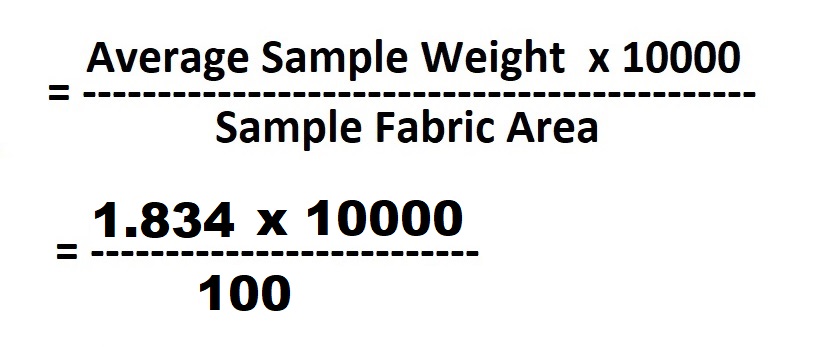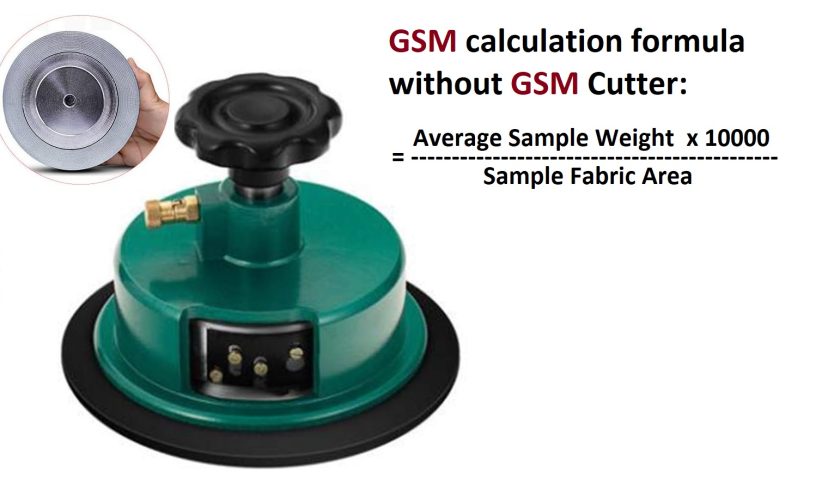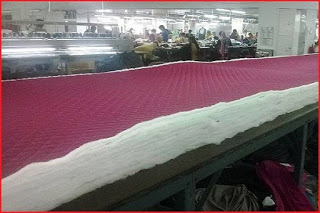Fabric is the most important item in the fashion business. Fabric thicker and thinner problem is a serious issue in garment production. Thus garments merchandiser has to keep an eye on fabric quality very carefully. A garments merchandiser has little scope to follow up fabric manufacturing process. As they are so busy they just pass the buyer’s requirement and instructions (Fabric type, Fabric swatch, Color Assortment, and GSM) to the fabric manufacturer for fabric development. Once the manufacturer develops sample fabric then they send fabric yds to garments merchandiser for buyer approval. Garments merchandiser has to check fabric quality, color, GSM before sending the fabric swatch to buyer for buyer approval.
If GSM cutter is not available then a garments merchandiser can easily identify the correct fabric GSM by using following GSM calculation method. Today, we are going to present the GSM calculation method in this article.
A garments merchandiser can count fabric GSM without using GSM cutter. Textile engineer, garments merchandisers or everyone has to know GSM calculation method.
What is GSM?
GSM stands on gram per square meter. GSM or “grams per square meter” is a metric measurement used to determine the density of a fabric. It is expressed by (gm/m2). It is the main parameter in fabric production. GSM count is essential in knitting fabric. It is controlled by loop length. If loop length increases GSM will decrease and vice versa.
What is GSM Cutter?
GSM cutter is one sort of simple round-cutting device that cuts 1/100 of a square meter of fabric area. By pressing upon GSM cutting device, you will get a round fabric piece.
What are the benefits of knowing GSM?
If you know fabric GSM then you can get some benefits like:
- GSM can help you choose the right fabric for your desired look and feel
- It can help you to determine the right threads count for your production. If you’re going to produce thicker fabric then you need to use heavier thread but if you’re going to produce thinner fabric, then you need to use finer thread.
- Thicker fabrics will be more structured while thinner fabrics will often have a more fluid drape.
Without GSM Cutter how do you get fabric GSM?
We can follow the following steps to get fabric GSM without using any GSM cutter:
- To calculate GSM, first you need a scale and a ruler.
- Collect a fabric piece that is 1 meter by 1 meter. Pick fabric yds and cut 5pcs fabric samples (10cm × 10cm) from the different points of the fabric. (Here 10cm is in length and 10cm is in width).
- Measure each fabric sample weight one by one and mark it by pen.
- Calculate the fabric sample area by multiplying length and width.
- Calculate the average weight of the fabric sample.
- Now we can get the fabric GSM by inputting “fabric sample area” and “average sample weight” in the following formula.
GSM calculation formula while GSM cutter is not available,
 Example:
Example:
Suppose,
5pcs (10cm × 10cm) size fabric sample chronological weights are 1.82gm, 1.85gm, 1.83gm, 1.85gm and 1.82gm respectively.
Now,
Find out the average weight of (10cm × 10cm) size fabric sample is,
= 1.834gm
And,
Multiply the sample fabric area = fabric sample length × fabric sample width
= (10 × 10)
= 100 cm2
Now,
GSM (in case of without using GSM cutter),

= 183.4
So, fabric GSM is 183.4
You may like: Duties and responsibilities of the cutting in-charge




